Despite a shortage of open water, geese are winging their way north
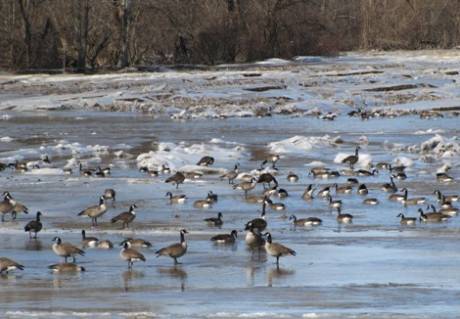
They seem to have delayed their migaration as long as possible. Now, their biological clocks ticking, large flocks of Canada geese have begun to return to their breeding grounds - even if the weather isn't fully cooperating. The problem? Presently there is little open water to accommodate the thousands that have already arrived.
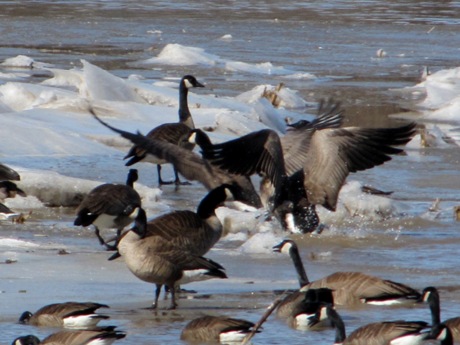
With a shortage of open water there's bound to be an occassional squabble.
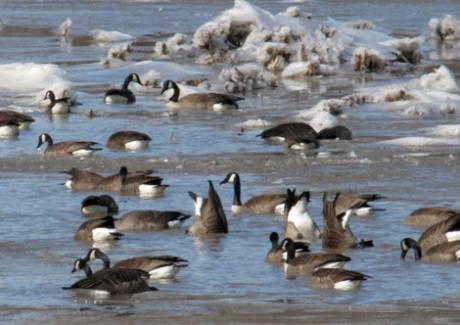
Bottoms up! The water is shallow enough for the Canada's to dabble for remnants of last autumn's corn.
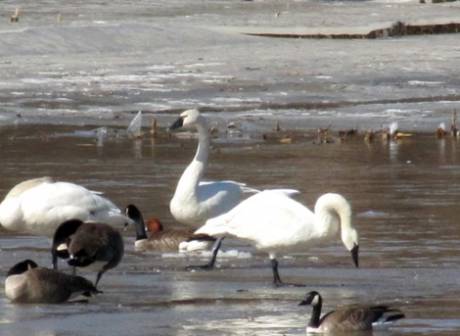
Geese aren't the only waterfowl in search of open water. Note the barely visible Redhead in front of the Tundra swan.
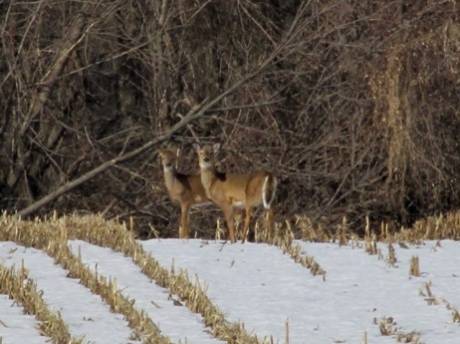
Unlike the migratory species, whitetails have had to endure a long, hard winter. Until recently these cornstalk remains were buried beneath a thick snowpack. For deer, foraging for meals the past couple of months was a lot of work.
